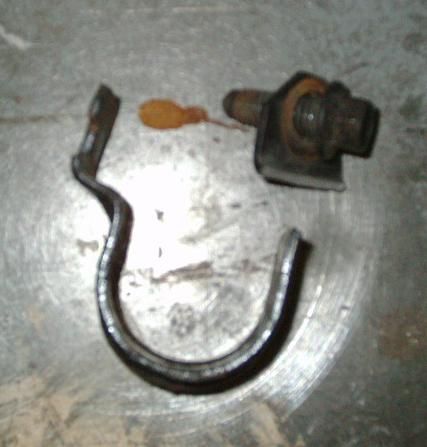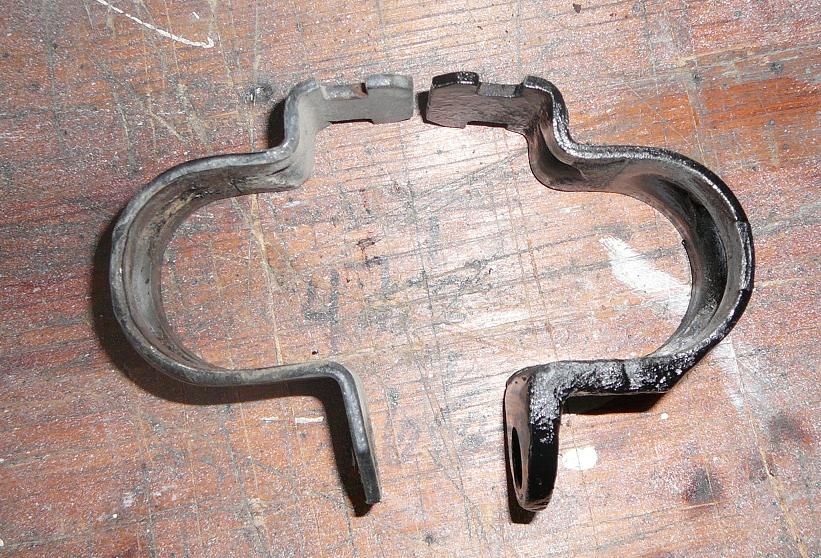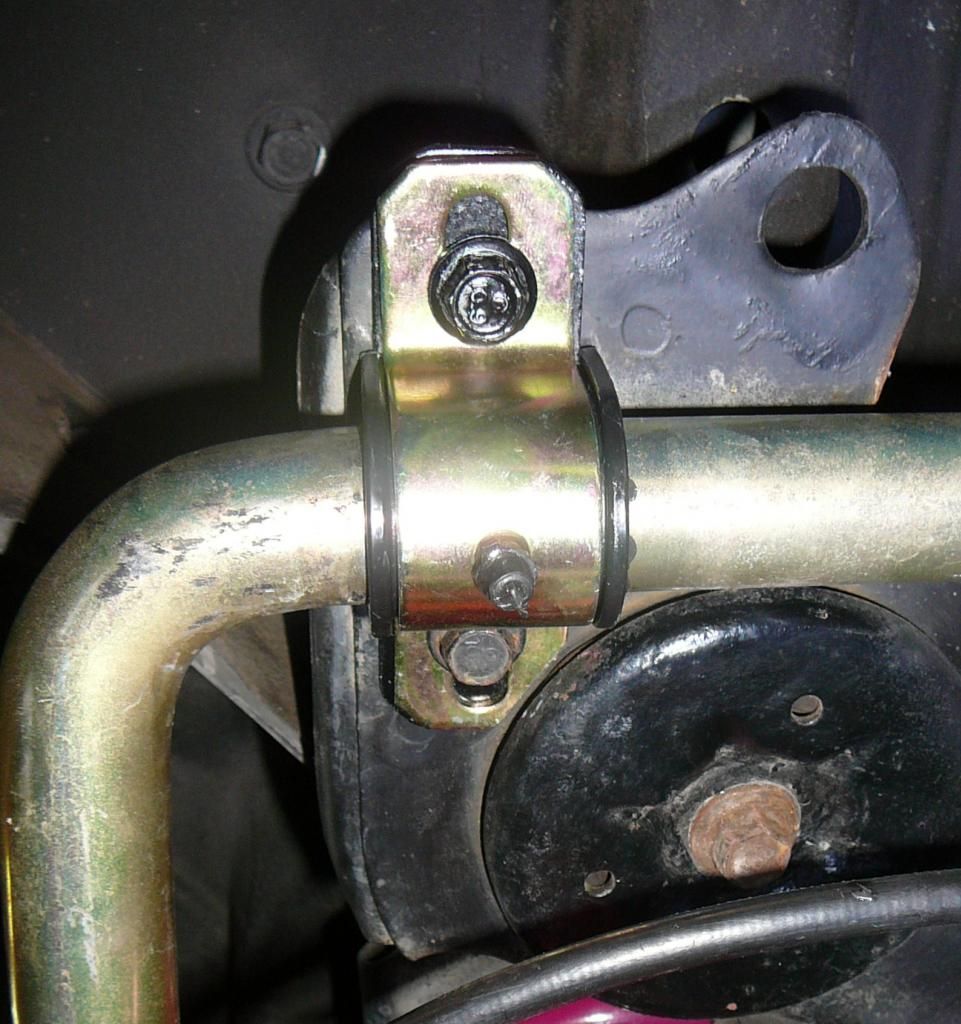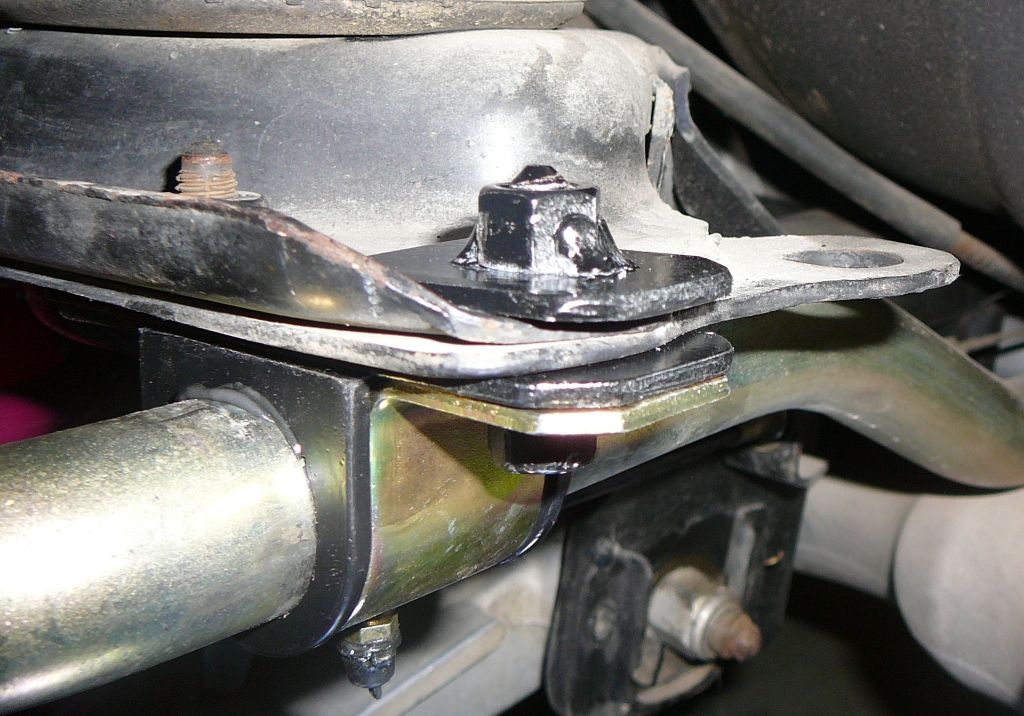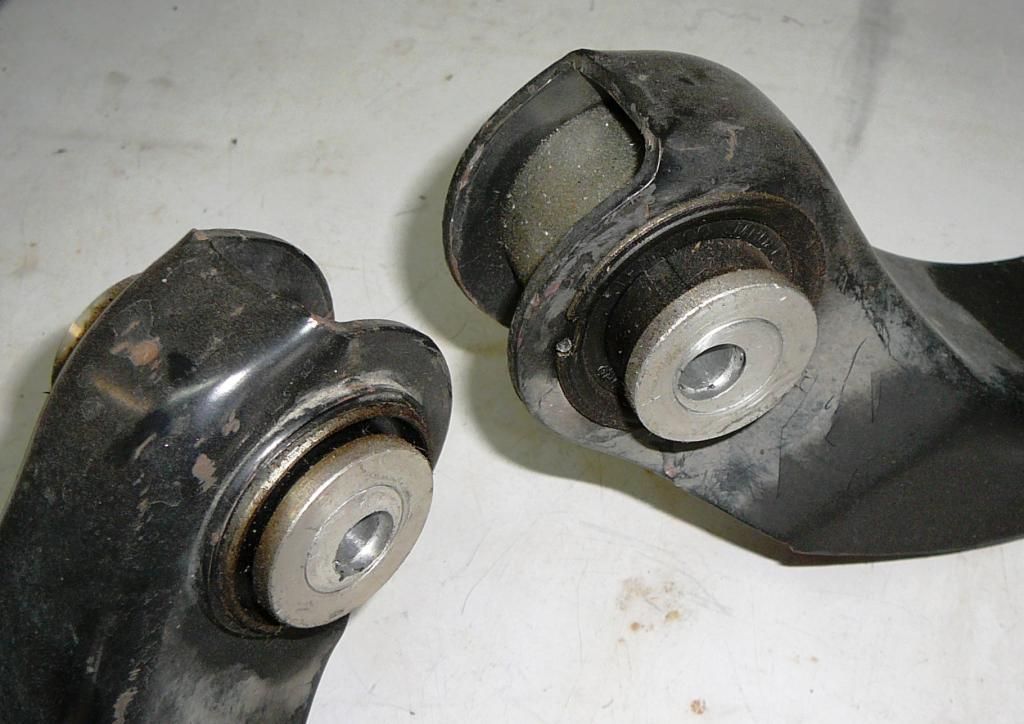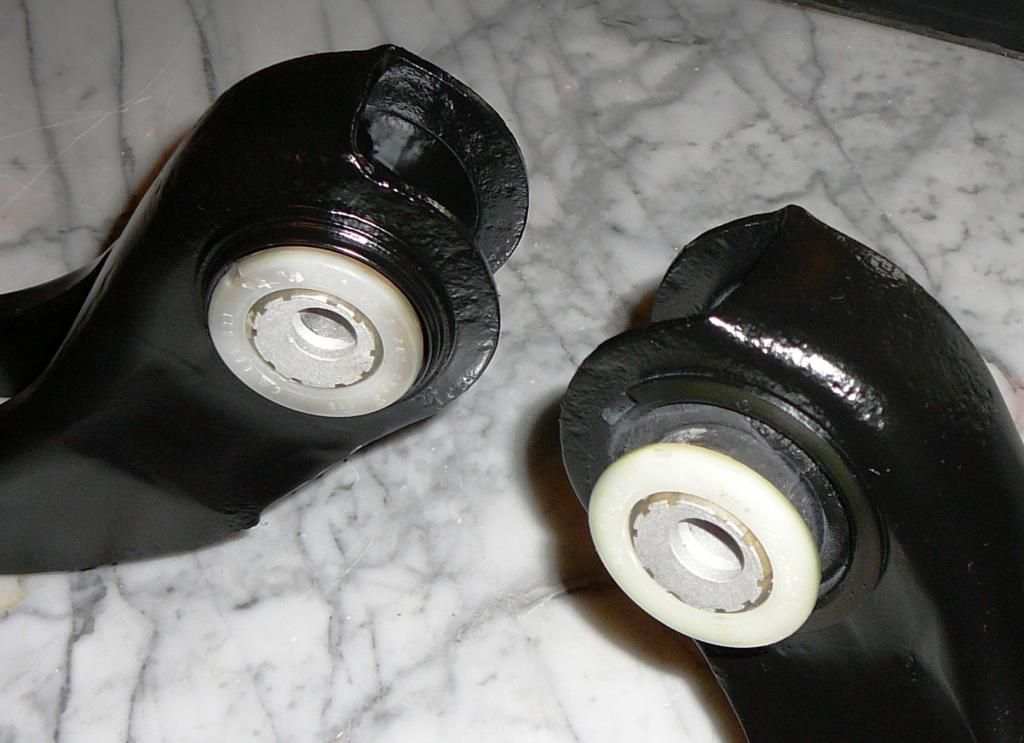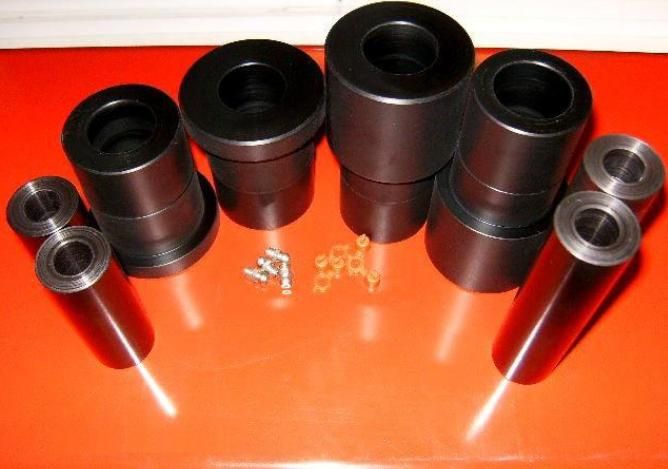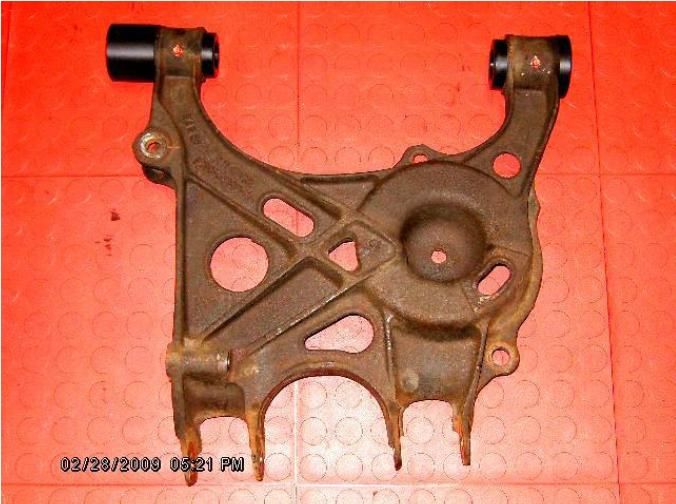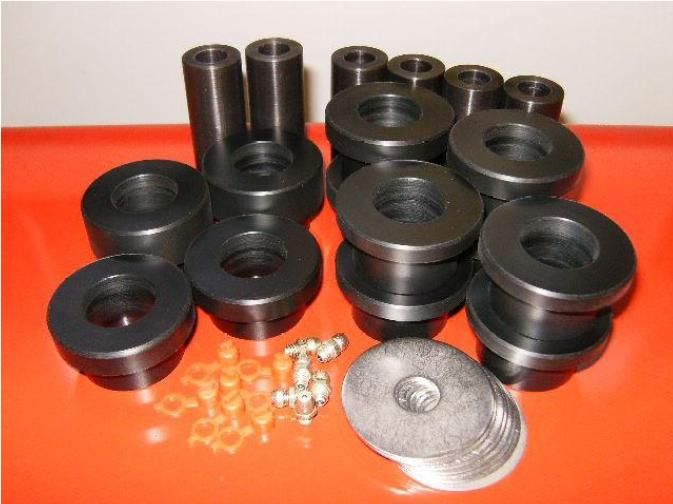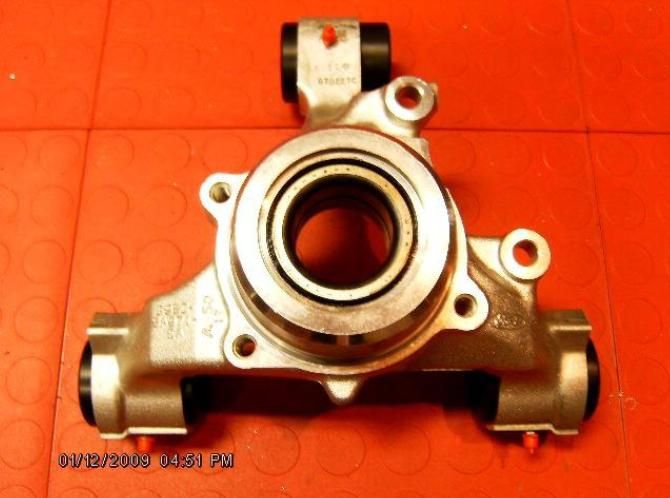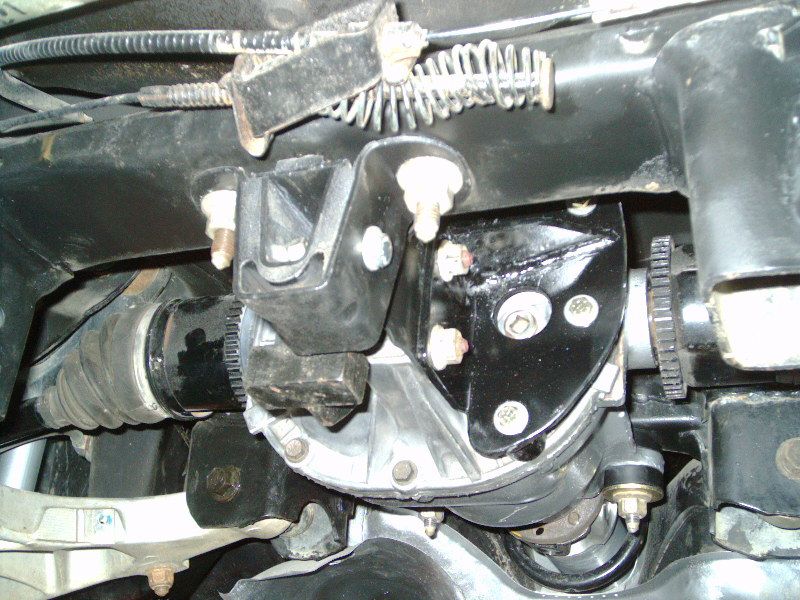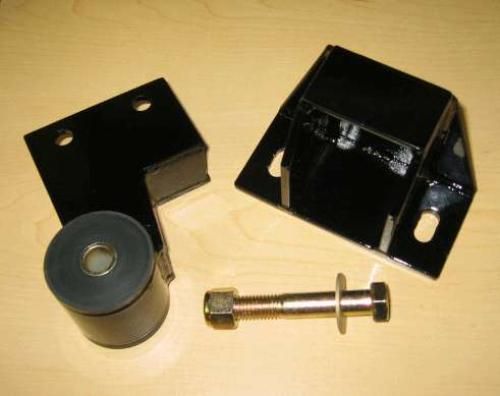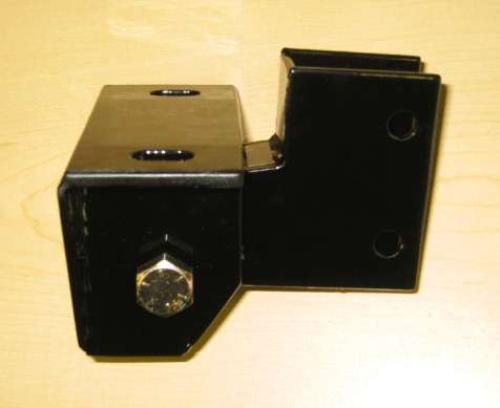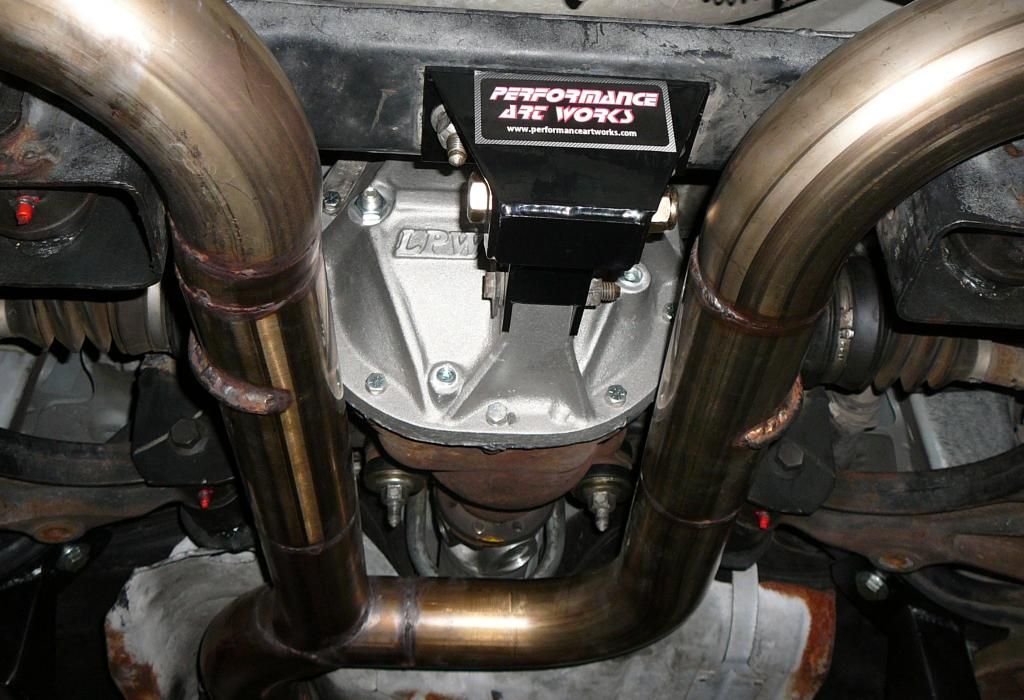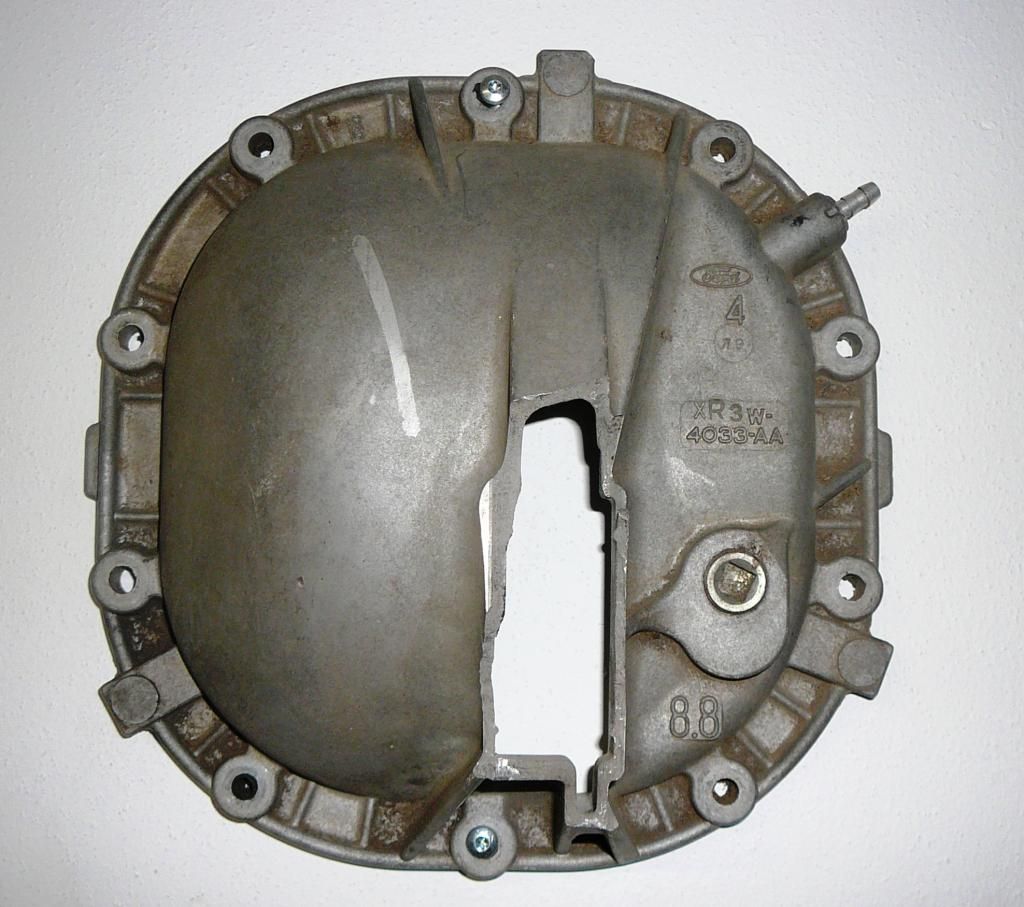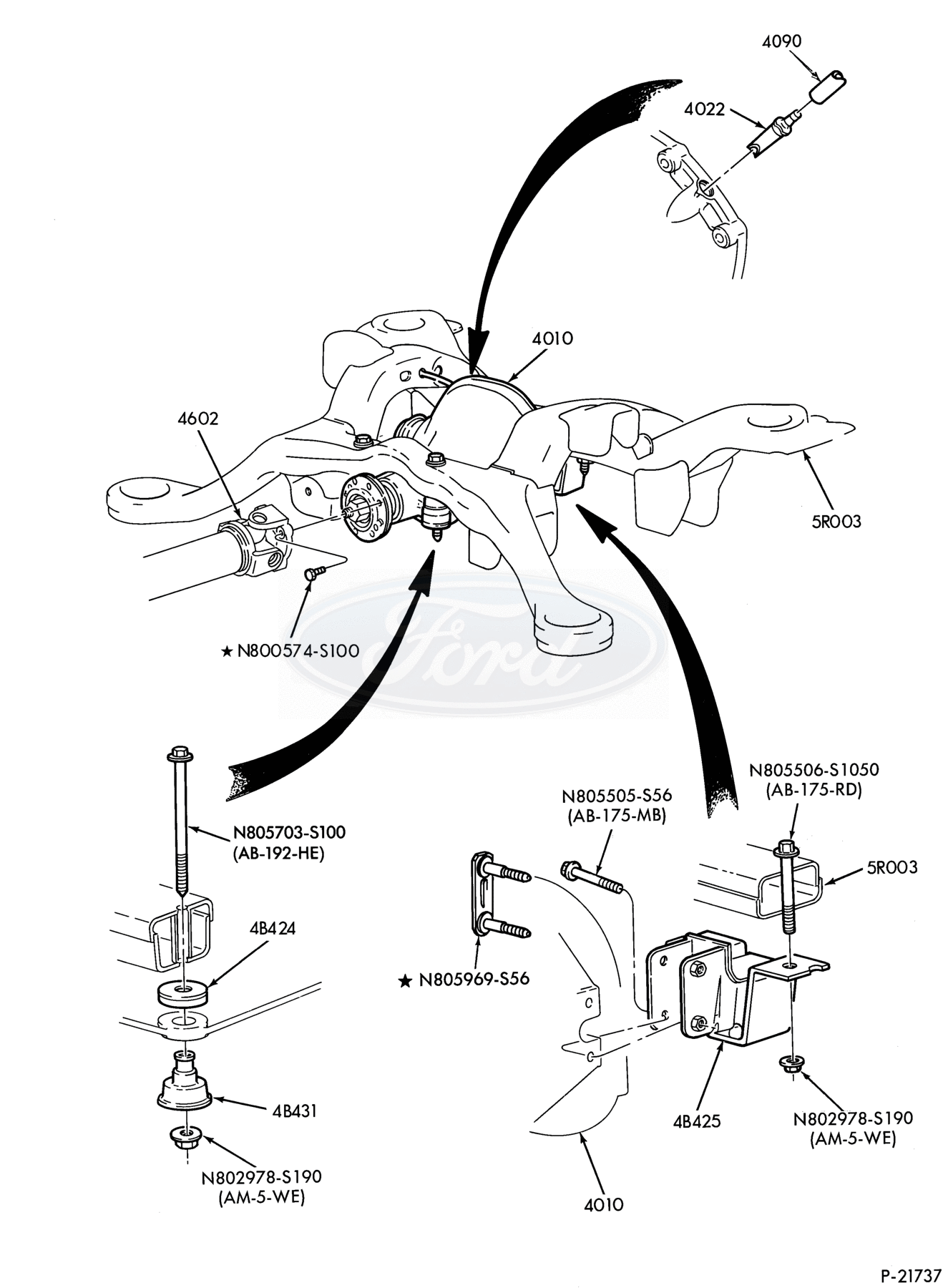racecougar
New member
I was approached to write up a tech article for SCCOA on the current bushing offerings for both the front and rear suspension systems. I thought I might post this here as well.

Whether you prefer a smooth, stock ride, or something a bit firmer and performance oriented, after twenty-plus years of service, all of these cars deserve a thorough inspection and possibly replacement of the various bushings throughout the front and rear suspension systems. Let’s dive right in and see what we’re dealing with, and what our replacement options are.
In the photo below, a 1-1/4” Energy Suspension bushing/mount is on the left. On the right is what you would receive with a 1-1/4” ADDCO anti-sway bar. If you look closely, you’ll notice that it is a 1-1/16” bushing that has been bored out to fit the 1-1/4” bar, leaving behind a rough, grippy surface without any channels for grease retention. These bushings, as well as the factory original rubber bushings, tend to squeak and resist movement. Gratuitous use of grease during assembly only delays the onset of this annoyance.
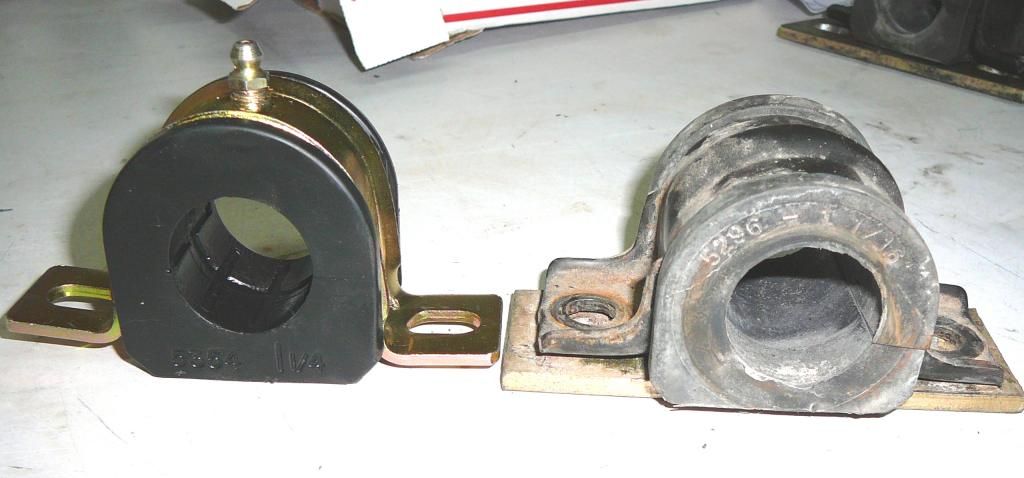
Notice the chart below, found at the following link: http://www.energysuspensionparts.com/Universal-Sway-Bar-Bushings.asp
For the front anti-sway bar, you want to stick to the bushings in the right column of the chart. For example, with a 1-1/4” ADDCO bar, you would order part number 9.5172. If you are using a stock bar, measure the diameter of the bar with a set of calipers at the bushing location and check the chart to see if a bushing is available in the appropriate size.
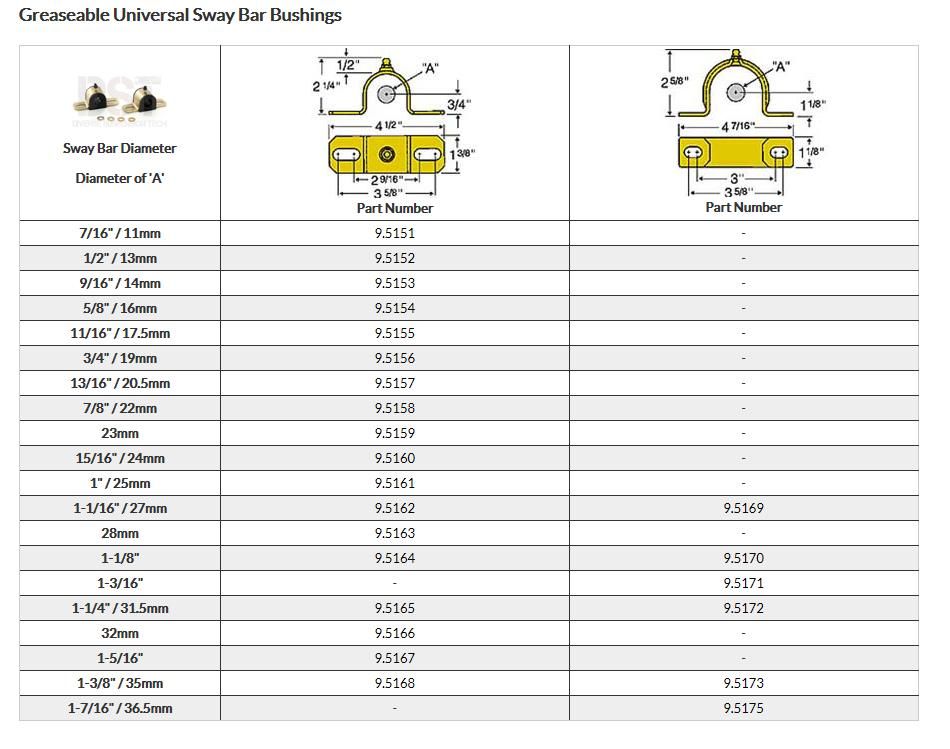
Just one of many reported cases of this issue: http://forums.tccoa.com/showthread.php?t=44814
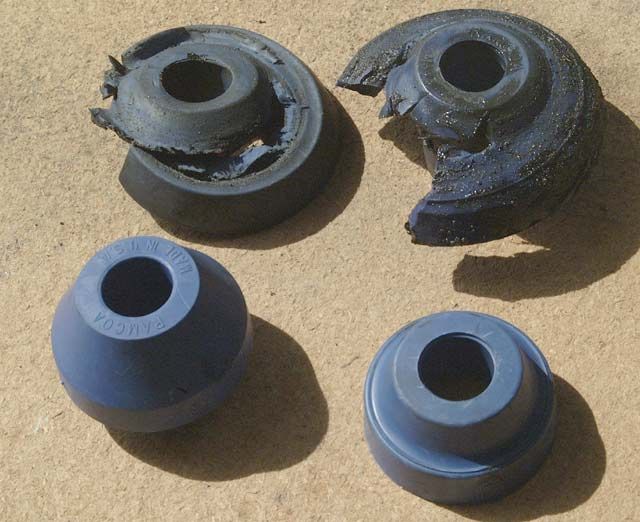
I highly recommend sticking to the Motorcraft rubber bushings in this instance. You’ll need two of each of the following:
Strut rod to K Member bushings: E9SZ-3B271-A and F7SZ-3A225-AA
Strut Rod to Lower Control Arm Bushings: E9SZ3A140A and E9SZ3A140B
This wonderful set of photos with part numbers was posted by Marcus at Lincolnvscadillac.com:
http://www.lincolnvscadillac.com/fo...-LCA-s&p=2037284674&viewfull=1#post2037284674

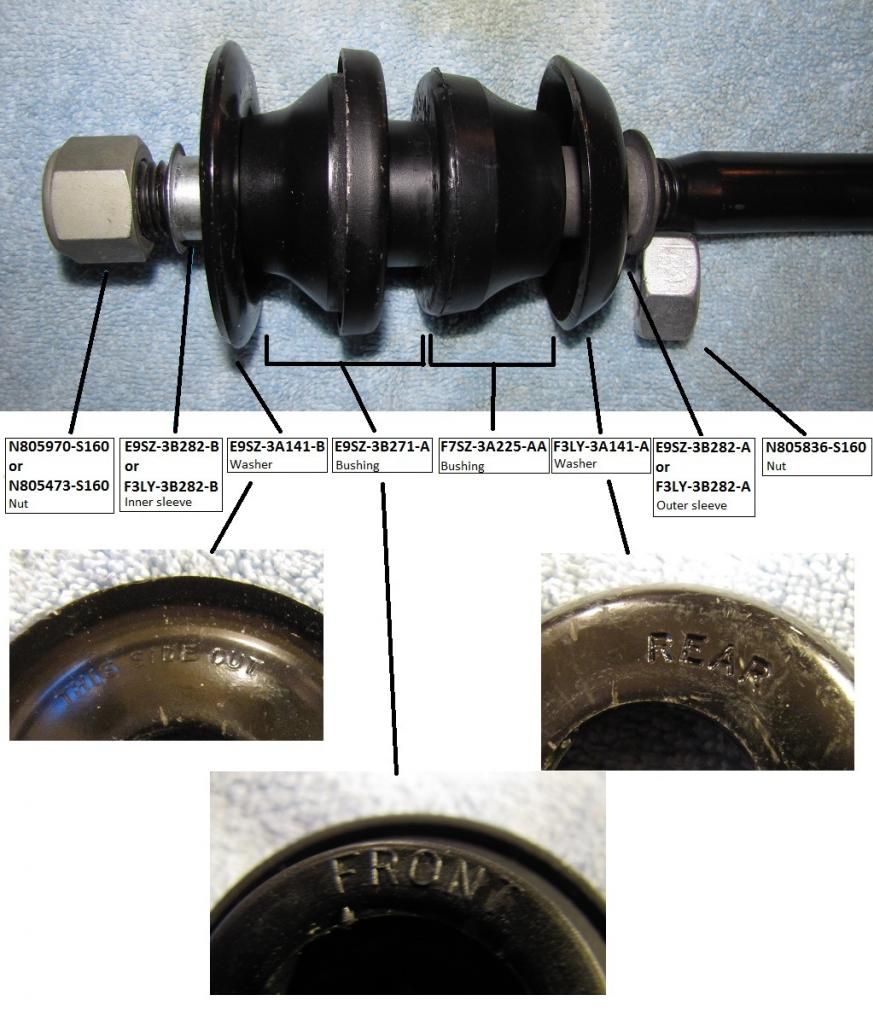
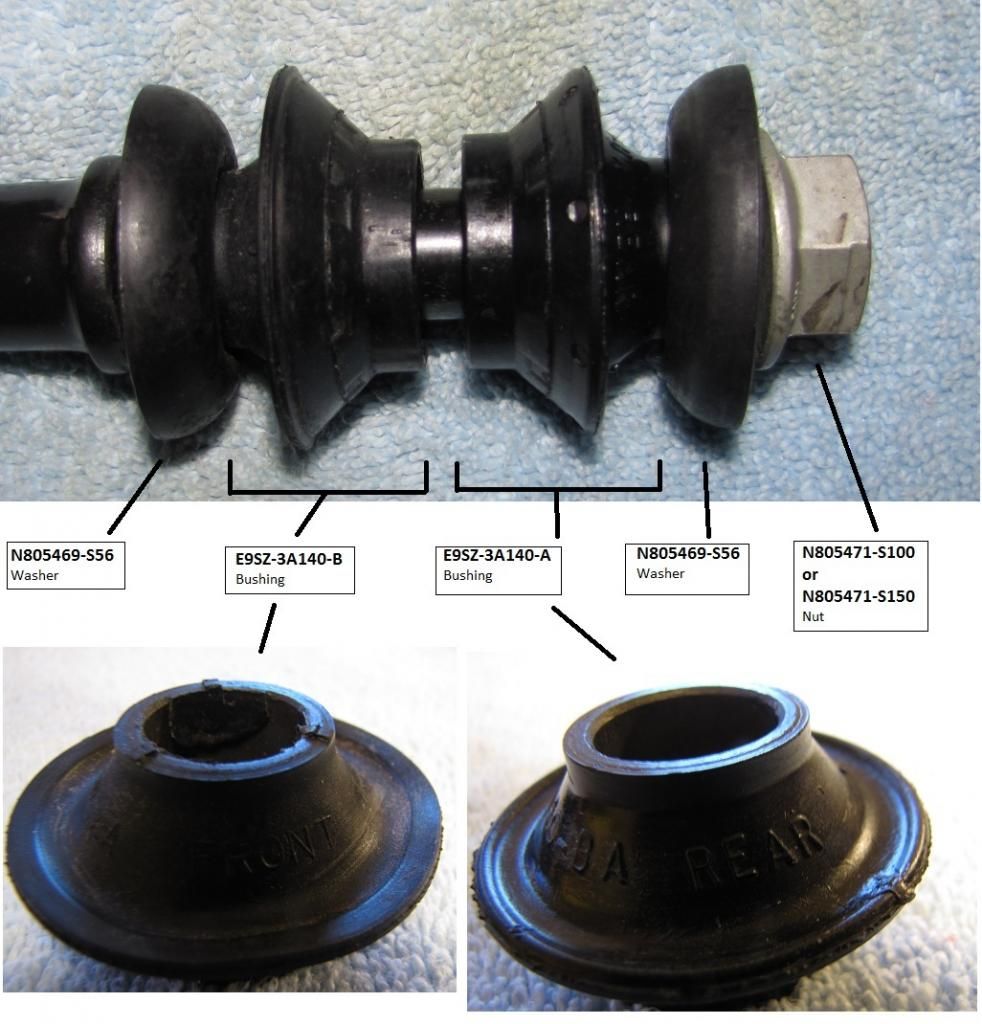
Recommended suspension bushings for MN12’s and FN10’s
Written by: Rod Maksimovich (Racecougar)
Written by: Rod Maksimovich (Racecougar)

Whether you prefer a smooth, stock ride, or something a bit firmer and performance oriented, after twenty-plus years of service, all of these cars deserve a thorough inspection and possibly replacement of the various bushings throughout the front and rear suspension systems. Let’s dive right in and see what we’re dealing with, and what our replacement options are.
Front anti-sway bar mount bushings:
Whether we’re dealing with a stock anti-sway bar or one of the offerings from ADDCO, Energy Suspension has you covered here. They offer a channeled, greaseable, polyurethane bushing, along with mount saddles and grease zerks that is leaps and bounds superior to both the stock rubber bushings and the “hogged out” poly bushings supplied with the ADDCO bars. In the photo below, a 1-1/4” Energy Suspension bushing/mount is on the left. On the right is what you would receive with a 1-1/4” ADDCO anti-sway bar. If you look closely, you’ll notice that it is a 1-1/16” bushing that has been bored out to fit the 1-1/4” bar, leaving behind a rough, grippy surface without any channels for grease retention. These bushings, as well as the factory original rubber bushings, tend to squeak and resist movement. Gratuitous use of grease during assembly only delays the onset of this annoyance.

Notice the chart below, found at the following link: http://www.energysuspensionparts.com/Universal-Sway-Bar-Bushings.asp
For the front anti-sway bar, you want to stick to the bushings in the right column of the chart. For example, with a 1-1/4” ADDCO bar, you would order part number 9.5172. If you are using a stock bar, measure the diameter of the bar with a set of calipers at the bushing location and check the chart to see if a bushing is available in the appropriate size.

Front strut rod bushings:
This is one area where a higher durometer bushing material isn’t only undesirable, it can become downright dangerous. The thermoplastic strut rod to K-member bushings are known to fail without warning, which can have serious consequences. Just one of many reported cases of this issue: http://forums.tccoa.com/showthread.php?t=44814

I highly recommend sticking to the Motorcraft rubber bushings in this instance. You’ll need two of each of the following:
Strut rod to K Member bushings: E9SZ-3B271-A and F7SZ-3A225-AA
Strut Rod to Lower Control Arm Bushings: E9SZ3A140A and E9SZ3A140B
This wonderful set of photos with part numbers was posted by Marcus at Lincolnvscadillac.com:
http://www.lincolnvscadillac.com/fo...-LCA-s&p=2037284674&viewfull=1#post2037284674



Front upper control arm to shock tower bushings:
While there are polyurethane replacements available, this is an area of diminishing return. Provided that they are in satisfactory condition, the typical rubber bushings as provided in any replacement upper control arm assembly will perform sufficiently. If this is an all-out autocross or open track effort, I could understand switching over to poly.Front lower control arm to K-member bushings:
Same as above.
